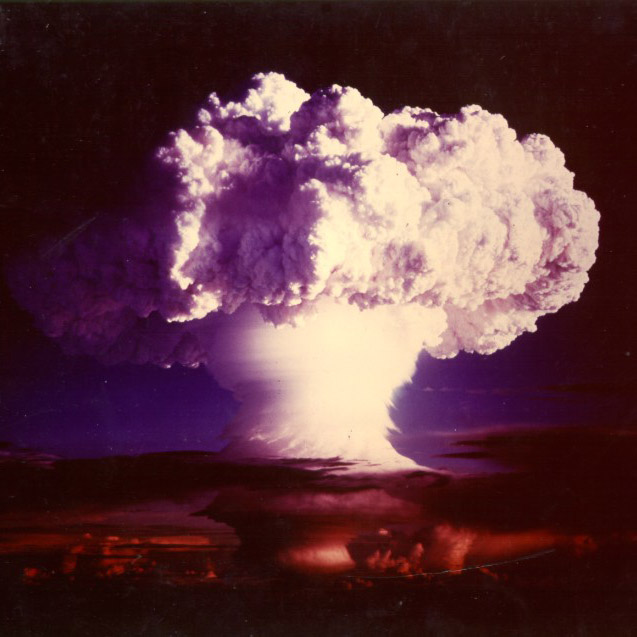Fermium
100
Fm
Group
n/a
Period
7
Block
f
Protons
Electrons
Neutrons
100
100
157
General Properties
Atomic Number
100
Atomic Weight
[257]
Mass Number
257
Category
Actinides
Colour
n/a
Radioactive
Yes
Named after Nobel laureate Enrico Fermi, one of the pioneers of nuclear physics
Crystal Structure
n/a
History
Fermium was discovered as a component of the debris of the first hydrogen bomb explosion in 1952.
It was identified by Albert Ghiorso and co-workers at the University of California, Berkeley in collaboration with the Argonne and Los Alamos National Laboratories, in the fallout from the Ivy Mike nuclear test.
The new element was produced by the nuclear fission of 17 neutrons with uranium-238.
It was identified by Albert Ghiorso and co-workers at the University of California, Berkeley in collaboration with the Argonne and Los Alamos National Laboratories, in the fallout from the Ivy Mike nuclear test.
The new element was produced by the nuclear fission of 17 neutrons with uranium-238.
Electrons per shell
2, 8, 18, 32, 30, 8, 2
Electron Configuration
[Rn] 5f12 7s2
Sixteen isotopes of fermium are known to exist
Physical Properties
Phase
Solid
Density
- g/cm3
Melting Point
1800.15 K | 1527 °C | 2780.6 °F
Boiling Point
-
Heat of Fusion
n/a kJ/mol
Heat of Vaporization
n/a kJ/mol
Specific Heat Capacity
- J/g·K
Abundance in Earth's crust
n/a
Abundance in Universe
n/a

Image Credits: Wikimedia Commons (National Nuclear Security Administration)
Fermium was first observed in the fallout from the Ivy Mike nuclear test
CAS Number
7440-72-4
PubChem CID Number
n/a
Atomic Properties
Atomic Radius
-
Covalent Radius
-
Electronegativity
1.3 (Pauling scale)
Ionization Potential
6.5 eV
Atomic Volume
29.1 cm3/mol
Thermal Conductivity
0.1 W/cm·K
Oxidation States
2, 3
Applications
Fermium is used for scientific research purposes only.
Fermium is harmful due to its radioactivity
Isotopes
Stable Isotopes
-Unstable Isotopes
241Fm, 242Fm, 243Fm, 244Fm, 245Fm, 246Fm, 247Fm, 248Fm, 249Fm, 250Fm, 251Fm, 252Fm, 253Fm, 254Fm, 255Fm, 256Fm, 257Fm, 258Fm, 259Fm, 260Fm